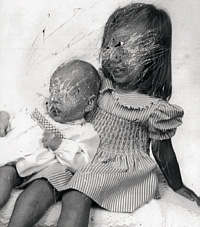WHO scales up child maltreatment prevention activities

As part of the ongoing WHO Global Campaign for Violence Prevention, and as its contribution to follow up on the UN Secretary General's Study on Violence Against Children, WHO has scaled up its child maltreatment prevention activities. WHO has a threefold stake in the prevention of violence against children.
1. Violence is an important public health issue in itself, directly affecting millions of individuals every year. For instance, WHO estimates cited in the UN Secretary General's Study on Violence Against Children state that nearly 53,000 children are murdered each year, and that the prevalence of forced sexual intercourse and other forms of sexual violence involving touch, among boys and girls under 18, is 73 million (or 7%) and 150 million (or 14%), respectively.
2. Violence against infants and younger children is a major risk factor for psychiatric disorders and suicide, and has lifelong sequelae including depression, anxiety disorders, smoking, alcohol and drug abuse, aggression and violence towards others, risky sexual behaviours and post traumatic stress disorders. Preventing violence against children therefore contributes to preventing a much broader range of noncommunicable diseases.
3. Violence against children is highlighted in the World report on violence and health (see chapters 2 and 3 on youth violence and child abuse and neglect) and as such is an integral part of WHO's Global Campaign for Violence Prevention and its objectives to promote uptake of the WHO prevention recommendations and support countries in their implementation of WHA Resolution 56.24 Implementing the recommendations of the World report on violence and health.
To help meet these prevention challenges, WHO has collaborated with the International Society for Prevention of Child Abuse and Neglect (ISPCAN) in the development of Preventing child maltreatment: a guide for taking action and generating evidence to assist countries to design and deliver programmes for the prevention of child maltreatment by parents and caregivers. The guide provides technical advice for professionals working in governments, research institutes and NGOs on how to measure the extent of child maltreatment and its consequences; how to design, implement and evaluate prevention programmes, and on important considerations for detecting and responding to child maltreatment. The guide is a practical tool that will help governments implement the recommendations of the recently released United Nations Secretary General's Study on Violence Against Children.
WHO, ISPCAN and other partners will be working intensively with a small number of selected countries to develop model prevention programmes built around the guide, and WHO Headquarters, Regional and Country Offices look forward to providing advice and technical support in response to requests for assistance more generally.


.jpg)